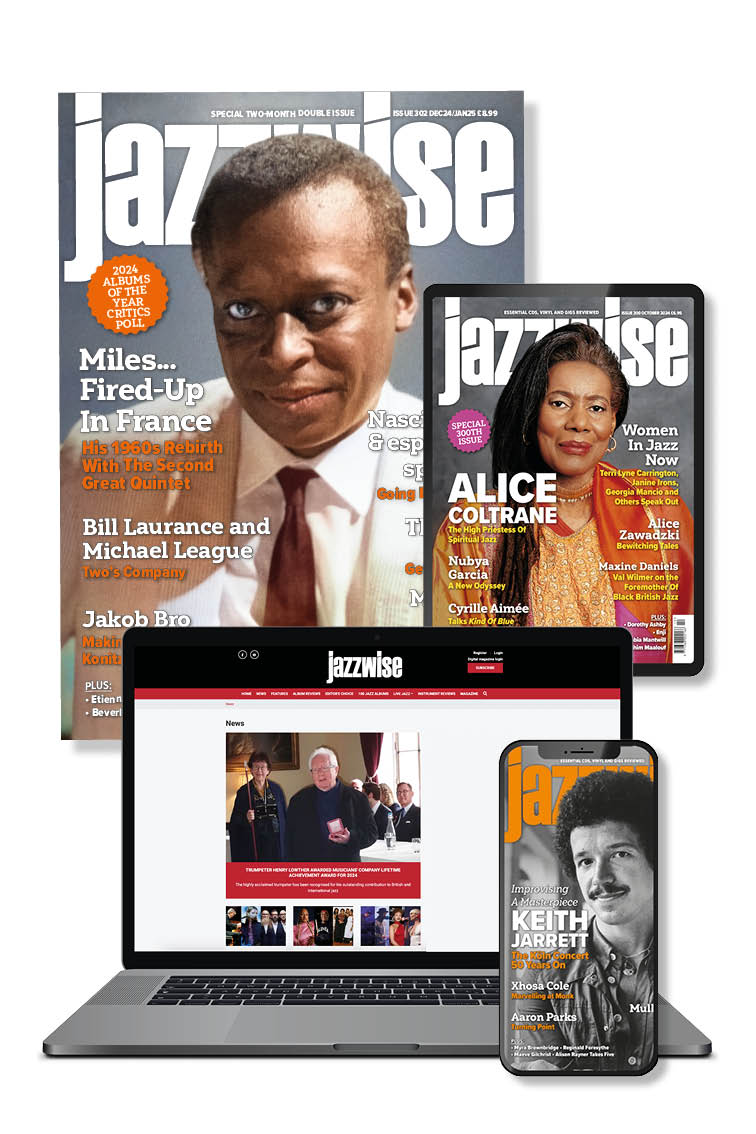Peter Apfelbaum and the Hieroglyphics Ensemble: Signs of Life
Author: Stuart Nicholson
View record and artist detailsRecord and Artist Details
Musicians: |
Sophie Alloway (d) |
Label: |
Howling Werewolf |
Magazine Review Date: |
June/2020 |
Media Format: |
CD |
Catalogue Number: |
004 |
RecordDate: |
October 2019 |
Multi-instrumentalist and former teenage prodigy Peter Apfelbaum’s Hieroglyphics Ensemble had been around for several years before the leader landed a recording contract in 1990, so Signs of Life arrived as a mature, fully formed conceptual masterpiece with arresting ensemble textures, well-written compositions and thoughtful improvisations. A feature of the band was the level of rhythmic complexity it created that existed in several layers – percussion, bass, drums and guitars weaving quite different, yet specific, textures that might be based in West African Highlife, Afro-Cuban salsa, reggae, the Bambara music of Mali, Moroccan Gnawa music and a whole lot more – creating a polyrhythmic complexity that was often greater in its effect than its component instrumental parts. Opening with ‘Candles and Stones’, its four contrasting sections are segued to create the kind of organic flow found in improvisation. The opening ‘call’ played by two sopranos is in the style of Yoruba praise-singing, which develops through quite specific rhythmically driven episodes and call and response sections towards the emergence of the rhythm ‘rumba Obatala’ which is of Afro-Cuban origin. ‘Walk to the Mountain (And Tell the Story of Love’s Thunderclapping Eyes)’ uses an African rhythmic tapestry approach over a harmonic cycle that is repeated over and over before Apfelbaum’s tenor rises in imperious melodic majesty over the matrix of melody and rhythm before a reprise of the earlier horn section. The album’s centrepiece, ‘The Forwarding Parts 1 and 2’ opens with reggae rhythm on guitar against Apfelbaum’s keyboard interjections that lead into an engaging initial subject by the full ensemble using ‘rhythmic blocks’ of sound. The swirling ensemble and climactic solos lead into ‘Part 2’, signalled by a change into a walking 4/4 by the bass that, amid the chattering polyrhythmic complexity, almost passes unnoticed. Apfelbaum’s music sounded like a peek into a multicultural world beyond our own that somehow made so much jazz of 1970s, 1980s and 1990s sound dated – a compelling vision of jazz in the present, but also of what jazz might yet become, as timeless a vision then as it is now. Apfelbaum was hailed a genius by The San Francisco Examiner. As we all know hyperbole’s superficial gloss quickly wears thin but 20 years on, there ain’t no arguments here.

Jazzwise Full Club
- Latest print and digital issues
- Digital archive since 1997
- Download tracks from bonus compilation albums throughout the year
- Reviews Database access
From £9.08 / month
Subscribe
Jazzwise Digital Club
- Latest digital issues
- Digital archive since 1997
- Download tracks from bonus compilation albums during the year
- Reviews Database access

